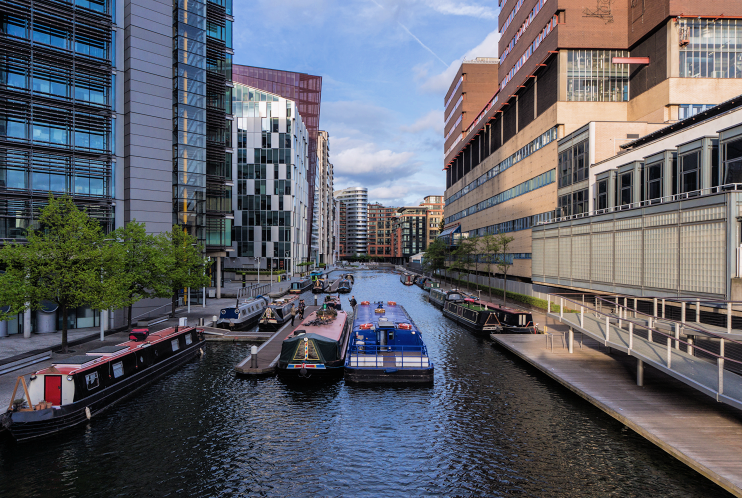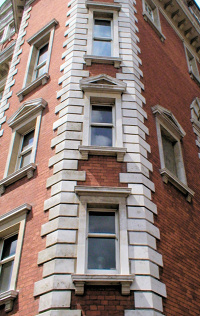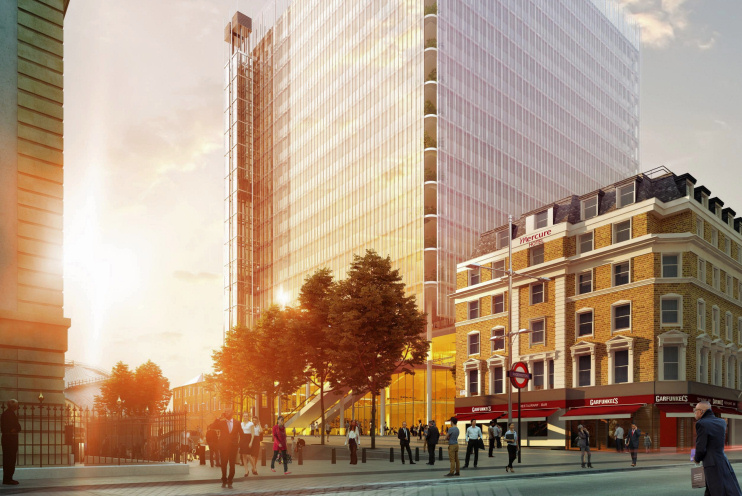Paddington
Paddington, Westminster
Once a parish and metropolitan borough stretching as far as West Kilburn, but now a compact, densely built-up commercial locality surrounding the station that bears its name

An ‘estate associated with a man called Padda’ was first recorded c.959, when it was spelt ‘Padintune’. A charter supposedly drawn up in 998 spelt it ‘Paddingtone’. The London Encyclopaedia calls Padda “an Anglo-Saxon chieftain who settled strategically near the junction of the Edgware and Bayswater Roads.” However, this appears to be educated guesswork at best. No one actually knows whether Padda was a tribal leader or just a smallholder, or where his estate was – though it’s generally believed to have been in the vicinity of what became Paddington Green. And Padda (or maybe Pada) could have lived any time between the 5th century and the 10th – but it was probably nearer the former.
The settlement at Paddington Green did not begin to grow until the 16th century, which was relatively late for a place so close to London. From 1524 the White Lion pub stood on Edgware Road, opposite what is now the end of Bell Street.
The parish church of St Mary was built in the 17th century and rebuilt in 1791, when the village had become popular as a rural retreat. The landscape gained a predictable smattering of gentlemen’s seats in the 18th century but was also much disfigured by gravel workings.

From the start of the 19th century the village became the focus of a series of transportation initiatives that hastened its urban development. The Paddington branch of the Grand Junction (now Grand Union) Canal opened in 1801 and the canal company sponsored the construction of Grand Junction Street (now Sussex Gardens) and Praed Street, named after the company’s chairman, William Praed. London’s first horse-drawn bus service began operating from Paddington Green in 1829.
The Great Western Railway arrived in 1838, at first using a temporary terminus building that later became the site of a goods depot. Queen Victoria alighted here in 1842 after her first-ever train journey, which had begun in Slough, Berkshire. A permanent station opened in 1854, designed by the railway’s chief engineer, Isambard Kingdom Brunel.
By this time the surrounding area was densely built up, mostly with working-class terraced housing. The White Lion was rebuilt twice, becoming the Metropolitan Music Hall in the 1860s. The village had become a crowded, semi-industrial suburb, and St Mary’s Hospital had been built on Praed Street. The south-eastern part of the parish had meanwhile been built up as fashionable Tyburnia.

In 1863 Paddington (Bishop’s Road) station became the western terminus of the world’s first underground railway line.
Piecemeal rebuilding from the late 19th century to the present day has left central Paddington with a streetscape that ranges from fine Georgian terraced houses to some seedy flats above shops.
The Metropolitan Music Hall was demolished in 1962 as a consequence of construction work on the Marylebone flyover and was replaced by Paddington Green police station. This well-known landmark is the fortress to which suspected terrorists are usually taken for questioning in London. The IRA exploded a bomb outside the police station in 1992. The flyover and the elevated section of the Westway divided the station and its environs from the settlement that had grown up around the green.
A large-scale mixed-use development at Paddington Waterside has recently taken shape in the shadow of the Westway.
The area around the station is the developers’ next target, notably in the form of the Paddington Cube, which is shown in the CGI below and is proposed to replace a former Royal Mail sorting office. The ‘floating’ 14-storey block, designed by Renzo Piano, is intended to be a more acceptable scheme than a previously proposed 72-floor tower dubbed the Paddington Pole.

Former Paddington residents include the American polymath Benjamin Franklin and the German poet Heinrich Heine.
The Victorian music hall song ‘Pretty Polly Perkins of Paddington Green’ became a big hit before the First World War and was probably based on a real girl called Annette Perkins: “She was as beautiful as a butterfly and proud as a queen / Was pretty little Polly Perkins of Paddington Green.”
Paddington is perhaps most famous for the children’s book and television character Paddington Bear, who was found at the station and went to live in the suburban Brown household. The bear made his first appearance on the big screen in 2014.

